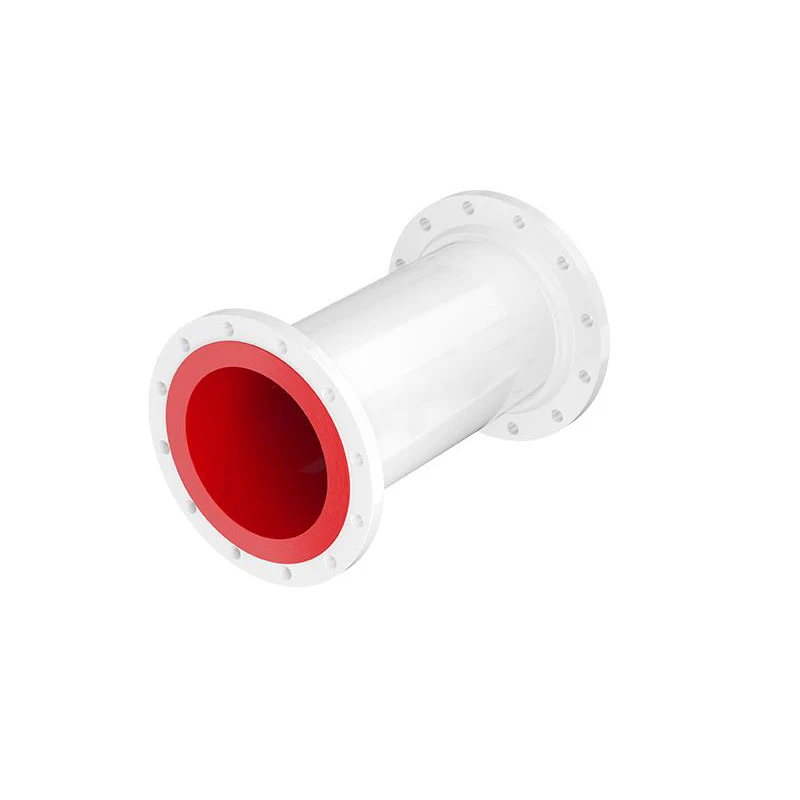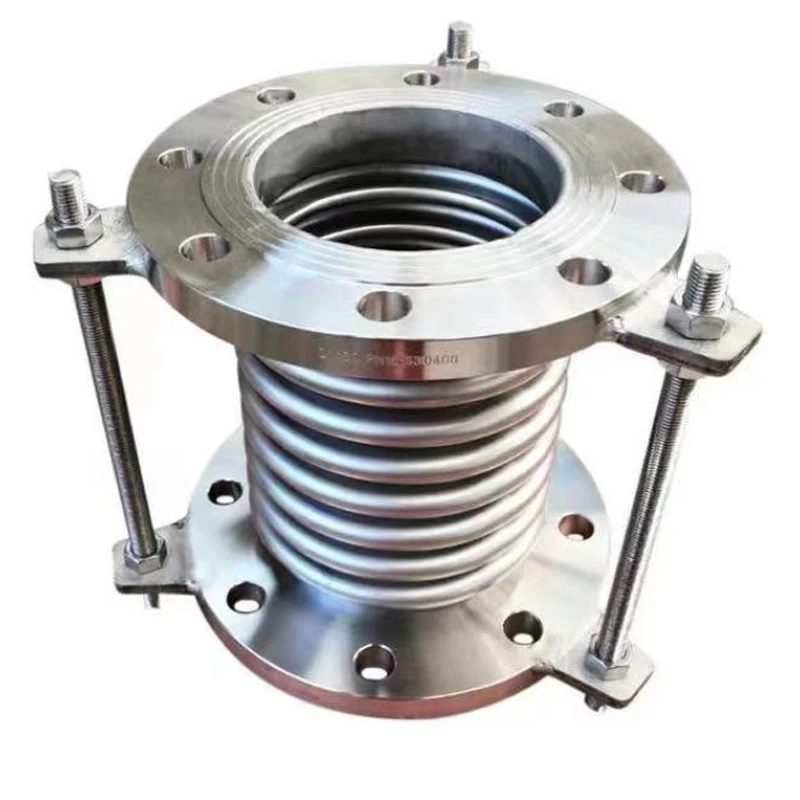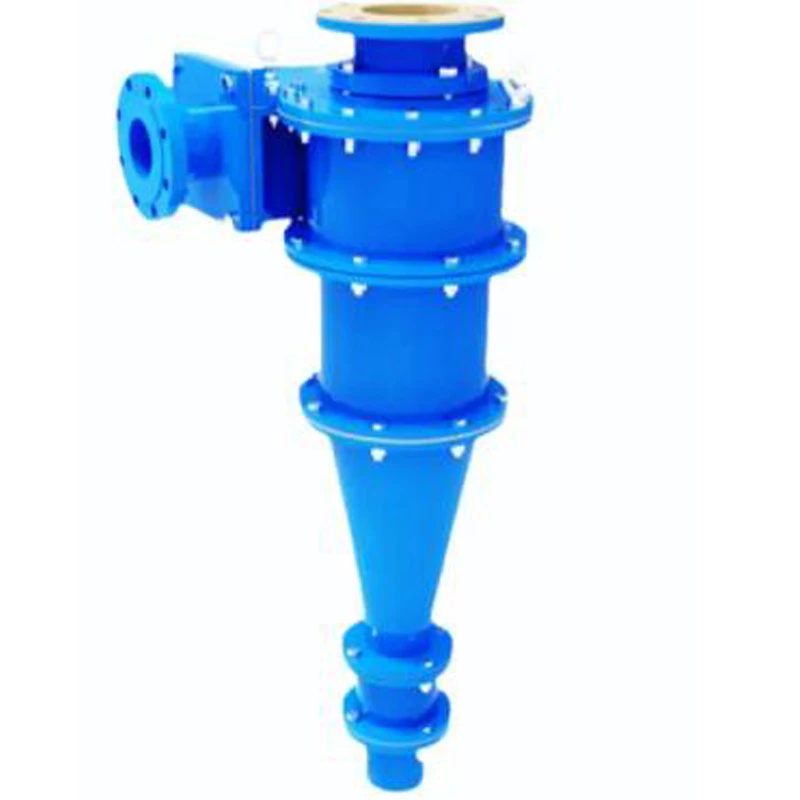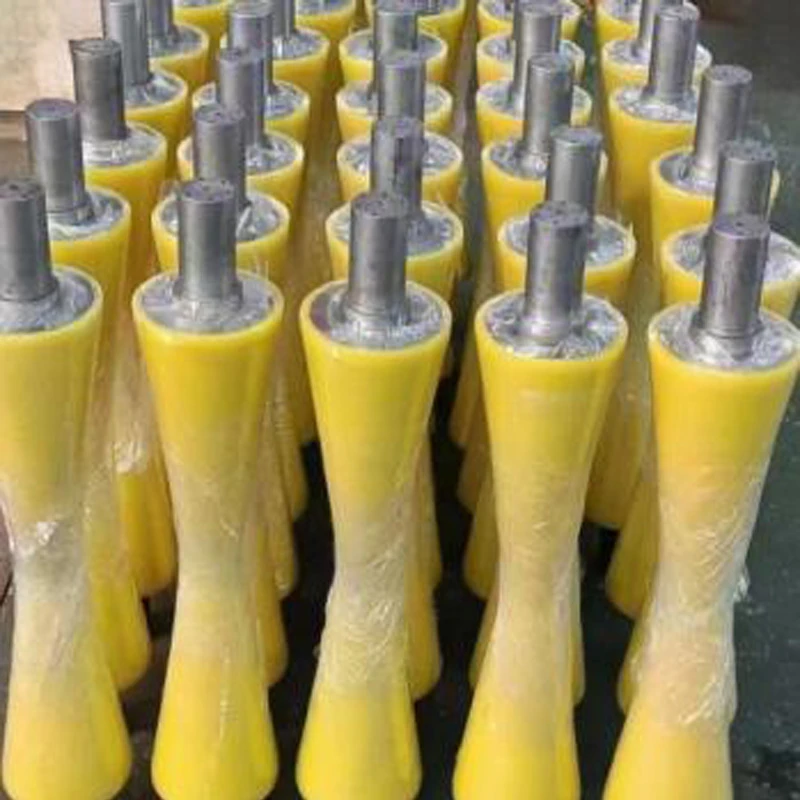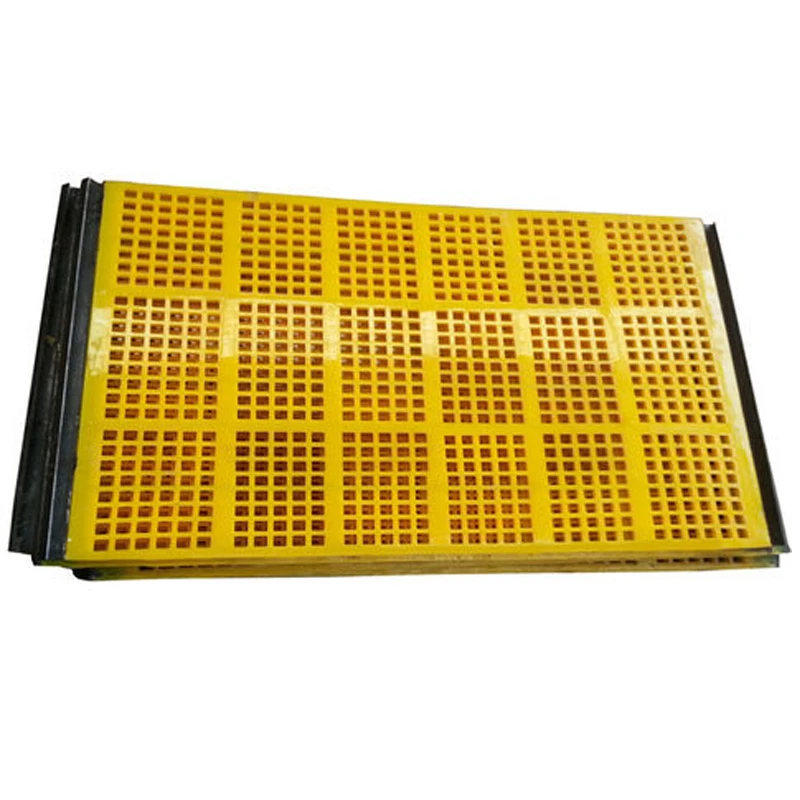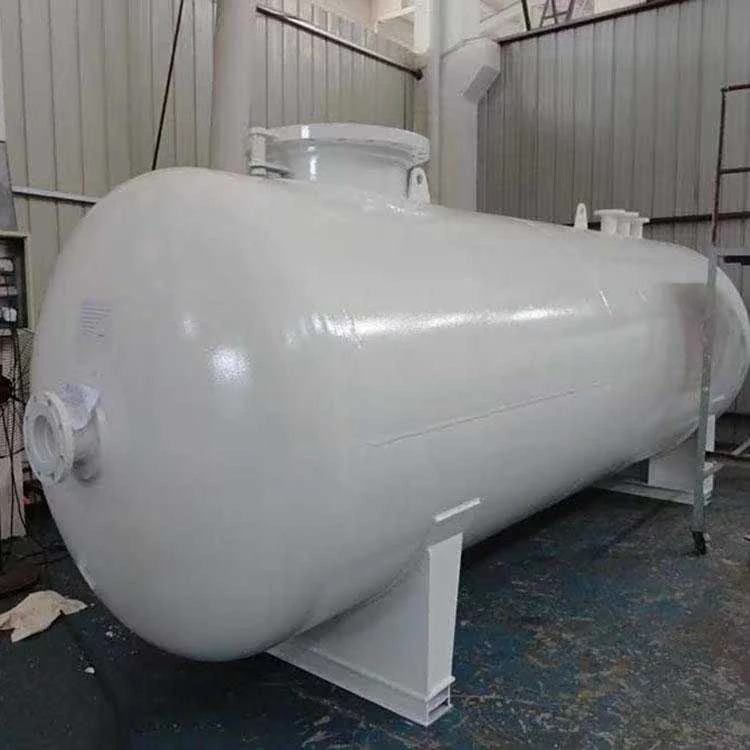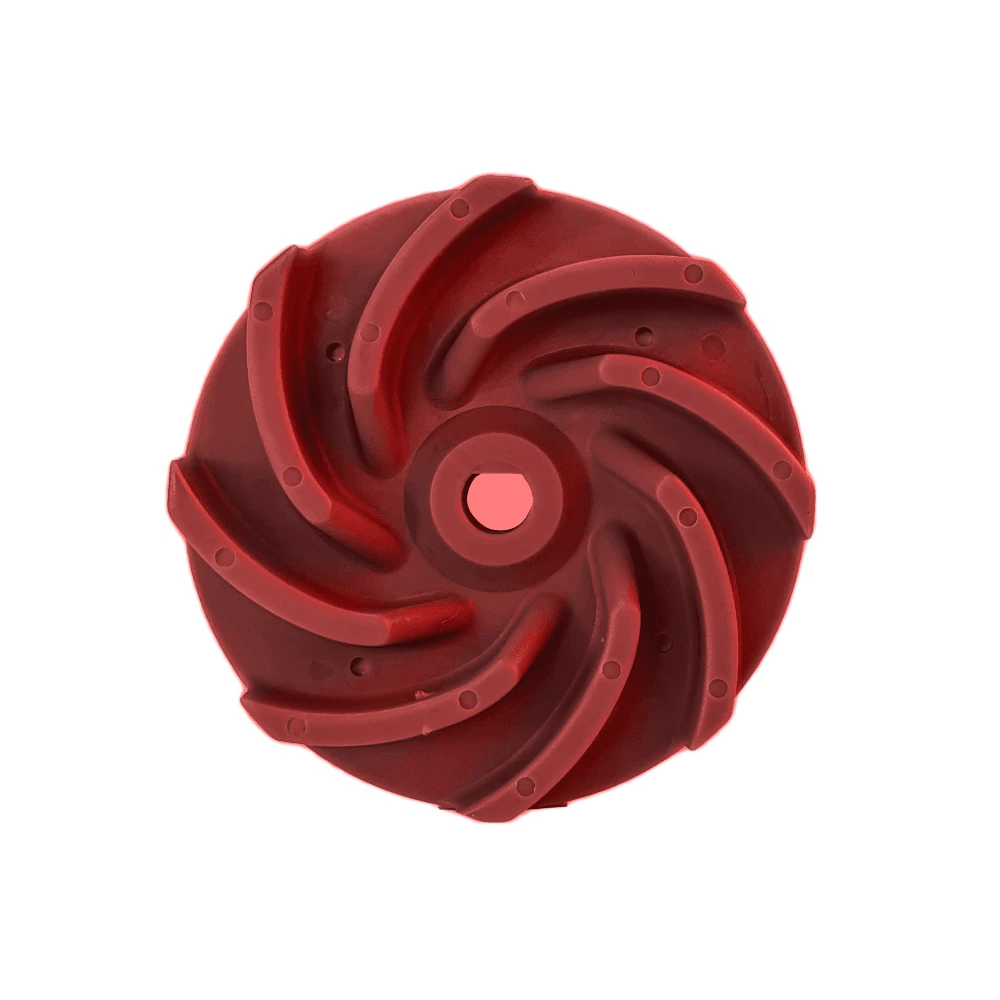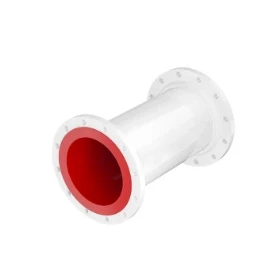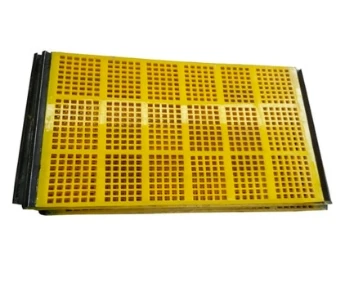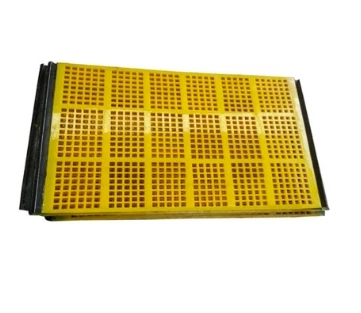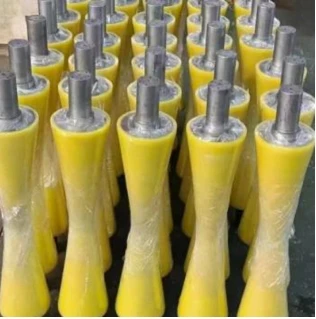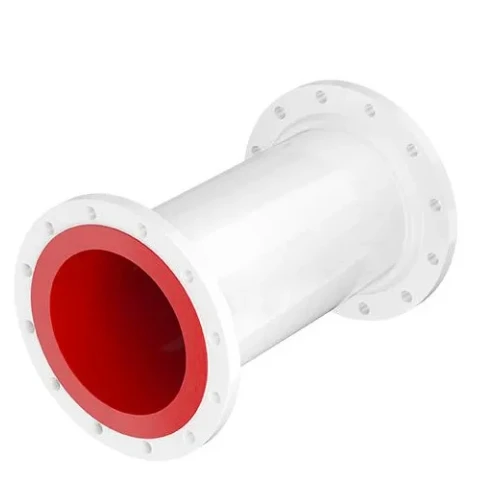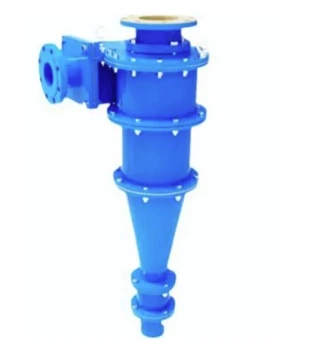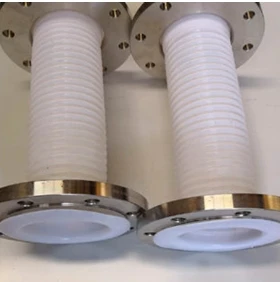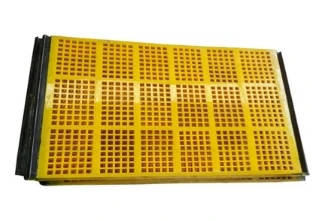PTFE Lined Tanks: Superior Chemical & Corrosion Resistance
In the highly demanding sectors of chemical processing, pharmaceuticals, and environmental management, the integrity of containment solutions is paramount. Traditional metallic tanks often succumb to the corrosive nature of aggressive media, leading to frequent maintenance, costly replacements, and potential safety hazards. This is where the PTFE Lined Tank emerges as a critical component, offering an unparalleled blend of chemical resistance, thermal stability, and long-term reliability. By integrating a robust steel or fiber-reinforced plastic (FRP) outer shell with an inert Polytetrafluoroethylene (PTFE) lining, these tanks provide a superior solution for storing and processing highly corrosive, abrasive, or high-purity substances, safeguarding both product quality and operational efficiency.
Industry Trends and the Growing Demand for Advanced Corrosion Solutions
The global chemical and pharmaceutical industries are experiencing significant growth, driven by innovation in specialty chemicals, biotechnology, and personalized medicine. This expansion inherently increases the demand for sophisticated infrastructure capable of handling a wider range of aggressive chemicals, often at elevated temperatures and pressures. Simultaneously, stringent environmental regulations are pushing industries towards safer, more durable, and leak-proof containment solutions to prevent spills and minimize environmental impact. These macro trends directly contribute to the escalating market for advanced corrosion-resistant equipment, with PTFE Lined Tank technology at the forefront.
A recent market analysis by Grand View Research projected the global chemical processing equipment market size to reach USD 30.5 billion by 2030, with a compound annual growth rate (CAGR) of 5.1% from 2023 to 2030. Within this, the demand for corrosion-resistant materials is a significant segment, propelled by the need for enhanced safety and operational longevity. The adoption of advanced polymers like PTFE for tank linings is a key factor driving this growth. Furthermore, the push towards sustainability and reduced lifecycle costs is compelling manufacturers to invest in solutions that offer extended service life and minimal downtime, areas where PTFE Lined Tank solutions excel. The integration of IoT sensors for real-time monitoring of tank integrity and substance levels is also an emerging trend, enhancing predictive maintenance capabilities and operational safety.
Understanding the Technical Parameters of a PTFE Lined Tank
A PTFE Lined Tank is engineered for specific performance envelopes, which are defined by several critical technical parameters. Understanding these parameters is essential for selecting the right tank for a given application.
- Liner Material: While PTFE is the primary lining material, variations exist such as PFA (Perfluoroalkoxy) and FEP (Fluorinated Ethylene Propylene), which offer slight differences in flexibility, permeation resistance, and processing capabilities. PTFE, known for its exceptional chemical inertness and wide operating temperature range (-200°C to +260°C), is ideal for highly aggressive acids, bases, and solvents.
- Liner Thickness: The thickness of the PTFE lining is a crucial factor determining its durability and resistance to permeation. Common thicknesses range from 3 mm to 10 mm, depending on the tank size, operating pressure, and the corrosivity of the contained media. Thicker linings provide enhanced protection against diffusion and mechanical damage.
- Bonding Method: The method by which the PTFE liner is bonded to the tank shell significantly impacts its long-term integrity. Techniques include loose lining (where the PTFE sheets are mechanically held or adhesive-bonded to the tank shell), and more advanced methods like isostatic molding or rotomolding for complex geometries, ensuring a seamless and fully bonded liner that eliminates the risk of liner collapse due to vacuum conditions or permeation.
- Outer Shell Material: The external shell provides structural integrity and pressure containment. Common materials include carbon steel (for general industrial applications), stainless steel (for hygienic or corrosive external environments), and Fiberglass Reinforced Plastic (FRP) for lighter weight and additional corrosion resistance in certain external environments.
- Design Pressure and Temperature: Tanks are designed for specific internal and external pressures, as well as maximum operating temperatures. Adherence to international standards like ASME Boiler and Pressure Vessel Code (BPVC) ensures safe operation. The thermal expansion coefficients of the shell and liner must be carefully matched or accommodated in the design to prevent delamination during thermal cycling.
- Volume Capacity: PTFE Lined Tank solutions are available in a wide range of capacities, from small laboratory reactors (e.g., 50 liters) to large industrial storage tanks (e.g., 50,000 liters or more), customized to meet specific process requirements.
Typical PTFE Lined Tank Specifications
The following table provides typical specifications for a range of PTFE Lined Tank configurations, illustrating the diversity in design and application.
| Parameter | Small Scale (e.g., Reactor) | Medium Scale (e.g., Mixing Tank) | Large Scale (e.g., Storage Tank) |
|---|---|---|---|
| Volume Capacity | 50 Liters - 500 Liters | 1,000 Liters - 10,000 Liters | 15,000 Liters - 50,000 Liters+ |
| Liner Material | PTFE / PFA | PTFE / PFA | PTFE |
| Liner Thickness | 3 mm - 5 mm | 5 mm - 8 mm | 6 mm - 10 mm |
| Outer Shell Material | Carbon Steel / Stainless Steel 304/316L | Carbon Steel / Stainless Steel 304/316L | Carbon Steel / Stainless Steel 304/316L / FRP |
| Design Pressure (Internal) | FV (Full Vacuum) to 6 Bar | FV to 4 Bar | FV to 2 Bar |
| Design Temperature (Max) | 200°C - 230°C | 180°C - 210°C | 150°C - 200°C |
| Working Media | Concentrated Acids (HF, H2SO4, HNO3), Strong Bases, Solvents | Concentrated Acids, Oxidizers, Pharmaceutical Intermediates | Waste Acids, Chlorinated Solvents, High-Purity Water |
| Standards Compliance | ASME, PED, ISO 9001 | ASME, PED, ISO 9001 | ASME, PED, API 650, ISO 9001 |
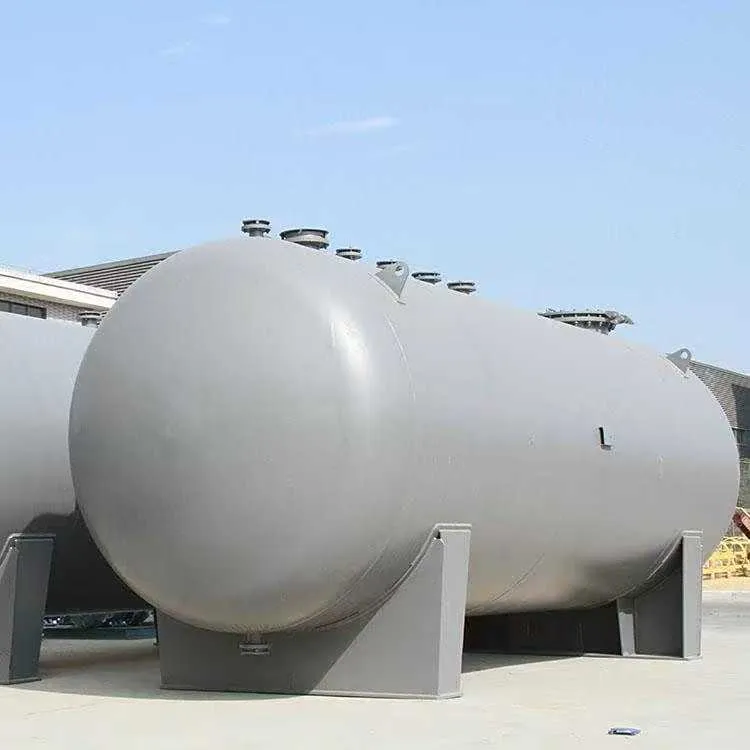
Broad Application Scenarios
The versatility of PTFE Lined Tank technology makes it indispensable across a multitude of industries where corrosion resistance and product purity are non-negotiable.
- Chemical Processing: This is arguably the largest application sector. PTFE Lined Tank solutions are used for storing and processing highly corrosive acids such as hydrochloric acid (HCl), sulfuric acid (H2SO4), hydrofluoric acid (HF), nitric acid (HNO3), and various strong alkalis and solvents. They are crucial in reactor vessels, mixing tanks, storage tanks, and distillation columns, particularly where high temperatures or pressures exacerbate corrosion.
- Pharmaceutical Industry: In pharmaceutical and biotechnology manufacturing, maintaining product purity is paramount. PTFE Lined Tank solutions prevent metallic contamination, ensuring the integrity of active pharmaceutical ingredients (APIs) and sensitive biological media. They are frequently employed in sterile processing, fermentation, and storage of high-purity water, acids, and solvents.
- Mining and Metallurgy: Acid leaching processes for mineral extraction (e.g., copper, gold) often involve highly aggressive acids and slurries. PTFE Lined Tank solutions provide the necessary durability to withstand both chemical attack and abrasion, extending equipment life in these harsh environments.
- Environmental Protection and Wastewater Treatment: Handling of industrial wastewater, particularly that containing strong acids, bases, or heavy metals, requires robust containment. PTFE Lined Tank solutions are ideal for neutralization tanks, storage of treatment chemicals, and effluent holding, preventing leakage and ensuring compliance with environmental regulations.
- Pulp and Paper Industry: Chemicals used in bleaching and pulping processes, such as chlorine dioxide and hypochlorite solutions, are highly corrosive. PTFE Lined Tank solutions are used for chemical preparation and storage, contributing to safer and more efficient operations.
- Semiconductor Manufacturing: The production of semiconductors requires ultra-high purity chemicals. PTFE Lined Tank solutions are vital for storing and distributing these chemicals, preventing any contamination that could compromise microchip quality.
- Food and Beverage: While less common than stainless steel, in applications involving highly acidic food products, strong cleaning-in-place (CIP) chemicals, or processes requiring absolute inertness to prevent flavor transfer or contamination, specialized PTFE Lined Tank systems can be utilized.
Technical Advantages of PTFE Lined Tank Solutions
The widespread adoption of PTFE Lined Tank technology is a testament to its significant technical advantages over traditional materials and alternative linings.
- Exceptional Corrosion Resistance: PTFE is one of the most chemically inert polymers known. It resists nearly all industrial chemicals, including concentrated acids, strong bases, organic solvents, and oxidizers, even at elevated temperatures. This prevents tank degradation, extends service life, and eliminates product contamination.
- Wide Temperature Range: PTFE maintains its physical and chemical properties over a broad temperature spectrum, typically from -200°C to +260°C, making PTFE Lined Tank solutions suitable for diverse process conditions.
- Non-Stick and Low Friction: The non-stick surface of PTFE prevents the adhesion of viscous or particulate matter, facilitating easy cleaning and reducing the risk of fouling. This low friction characteristic also aids in the flow of challenging media.
- High Purity and Non-Contamination: PTFE does not leach substances into the contained media, making it ideal for applications requiring high purity, such as pharmaceuticals, food processing, and semiconductor manufacturing. It is FDA-compliant for certain applications.
- Extended Service Life and Reduced Maintenance: Due to their superior chemical resistance, PTFE Lined Tank solutions offer a significantly longer service life compared to unlined or rubber-lined tanks. This translates to reduced maintenance costs, less downtime, and a lower total cost of ownership (TCO). For example, while a rubber-lined tank might require relining every 3-5 years in highly corrosive environments, a well-maintained PTFE Lined Tank can last 15-20 years or more.
- Safety Enhancement: By effectively containing hazardous chemicals, PTFE Lined Tank solutions minimize the risk of leaks, spills, and associated environmental and safety hazards, contributing to a safer working environment.
- Energy Efficiency (indirect): While not directly energy-saving in terms of heat transfer, the long-term reliability and reduced need for material replacement and extensive cleaning cycles contribute to overall operational efficiency and indirectly reduce the energy footprint associated with equipment maintenance and replacement.
Manufacturer Comparison and Selection Criteria
Choosing the right manufacturer for a PTFE Lined Tank is as crucial as selecting the right tank itself. While specific manufacturer names won't be listed, here are key criteria for comparison:
Experience and Expertise: Look for manufacturers with a long history and deep specialization in fluoropolymer lining technology. Their expertise in material selection, bonding techniques, and design for specific applications (e.g., high pressure, vacuum, agitation) is critical. A manufacturer with 20+ years in the industry often has a proven track record and refined processes.
Quality Control and Certifications: A reputable manufacturer will adhere to strict quality control protocols at every stage, from material sourcing to final inspection. Key certifications to look for include:
- ISO 9001: Demonstrates a robust quality management system.
- ASME U/UM Stamp: For pressure vessels, indicating compliance with the American Society of Mechanical Engineers Boiler and Pressure Vessel Code.
- PED (Pressure Equipment Directive): For sales within the European Economic Area.
- Specific Industry Certifications: Such as FDA compliance for pharmaceutical/food applications, or API standards for oil & gas.
Customization Capabilities: Every process is unique. A top-tier manufacturer should offer extensive customization options, including specific dimensions, nozzle configurations, agitator supports, heating/cooling jackets, and specialized internal components like baffles or dip tubes, all with PTFE lining.
Engineering and Design Support: The manufacturer should have a strong in-house engineering team capable of providing detailed drawings, finite element analysis (FEA) for stress analysis, and performance calculations to ensure the tank meets exact process requirements and safety standards.
After-Sales Service and Warranty: Evaluate the manufacturer's commitment to customer support, including installation assistance, maintenance guidance, and prompt response to any issues. A comprehensive warranty (e.g., 5-year structural warranty for the shell, 1-year liner integrity warranty against manufacturing defects) reflects confidence in their product. Our tanks come with a standard 1-year warranty on material and workmanship, with extended warranties available upon request, demonstrating our confidence in product durability.
Reputation and Client Testimonials: Seek out references and review case studies. A strong reputation built on successful projects and positive client feedback is a reliable indicator of a manufacturer's reliability and product performance.
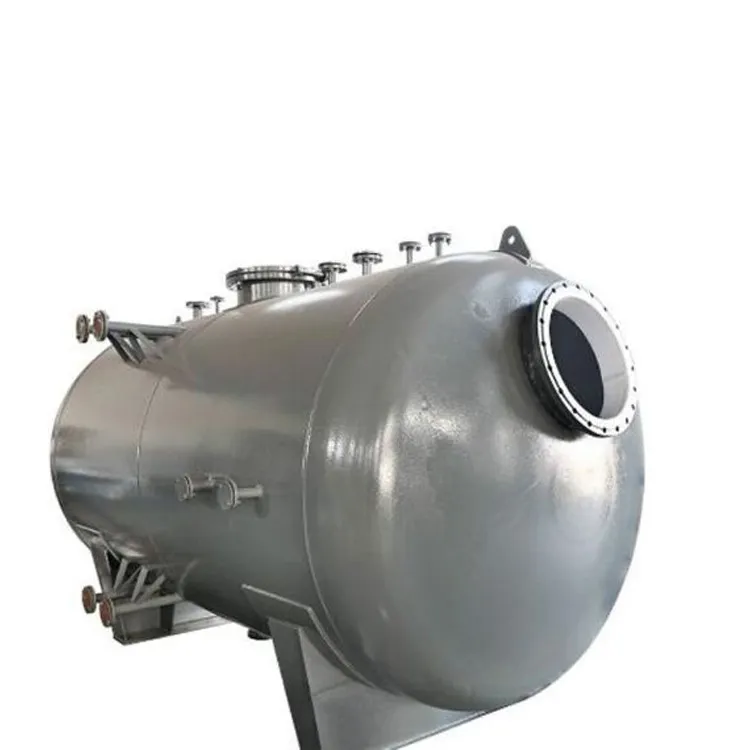
Comprehensive Customization Solutions
Recognizing that off-the-shelf solutions rarely fit complex industrial processes perfectly, manufacturers of PTFE Lined Tank systems offer extensive customization options. This ensures seamless integration into existing plant layouts and optimizes performance for specific media and operational conditions.
- Dimensions and Configuration: Tanks can be custom-fabricated to precise diameters, heights, and volumes, from compact portable tanks to large fixed storage vessels. Configurations can range from vertical cylindrical to horizontal, cone-bottom, or dish-bottom designs, optimized for drainage or agitation.
- Nozzle and Manway Placement: Custom placement and sizing of nozzles for inlets, outlets, vents, drain, and instrumentation (e.g., level sensors, temperature probes) are standard. Manways can be designed for easy access for inspection and cleaning, ensuring the PTFE lining integrity.
- Internal Components: Integration of PTFE-lined internal components like dip pipes, spargers, baffles, thermowells, and agitator shafts or impellers is common. These ensure the entire wetted surface remains corrosion-resistant.
- External Accessories: Customization extends to external features such as heating/cooling jackets (half-pipe coils, dimple jackets, limpet coils), insulation, ladders, platforms, support skirts, or leg supports.
- Pressure and Vacuum Design: Tanks can be designed for full vacuum operation or high internal pressures, with the PTFE liner securely bonded or anchored to prevent collapse or delamination under these conditions.
- Agitation Systems: For mixing or reaction applications, the tank design can incorporate specific agitator mounting pads, and the internal baffling system can be optimized to achieve desired mixing characteristics without compromising the liner.
- Material of Construction for Outer Shell: While carbon steel is common, stainless steel grades (304, 316L) are used for external corrosion resistance or hygienic applications. FRP shells are chosen for lightweight, external corrosion resistance, and often for very large storage tanks.
The lead time for custom PTFE Lined Tank fabrication typically ranges from 8 to 16 weeks, depending on the complexity, size, and specific material requirements. Rush orders may be accommodated at an additional cost, with clear communication on revised delivery schedules. We maintain strict quality control throughout the manufacturing process, from raw material inspection to final functional testing, ensuring every custom solution meets the highest standards.
The Manufacturing Process of a PTFE Lined Tank
The production of a PTFE Lined Tank is a precise, multi-stage process that combines robust metal fabrication with advanced fluoropolymer application techniques. The goal is to create a seamless, highly durable, and chemically resistant composite structure.
PTFE Lined Tank Manufacturing Process Flow
(Illustrative Diagram of Key Stages)
- Shell Fabrication (e.g., Carbon Steel, Stainless Steel, or FRP):
- Material Selection & Cutting: High-grade steel plates (e.g., ASTM A516 Gr. 70 for carbon steel, ASTM A240 Gr. 316L for stainless steel) or FRP composite materials are selected based on design specifications. Plates are cut to size using CNC plasma or laser cutting for precision.
- Forming: Plates are rolled into cylindrical sections. Dished heads and cones are formed through dishing and flanging processes.
- Welding & Assembly: Sections are meticulously welded together using certified welding procedures (e.g., ASME Section IX compliant for pressure vessels) such as Submerged Arc Welding (SAW), Gas Tungsten Arc Welding (GTAW), or Shielded Metal Arc Welding (SMAW). All welds undergo non-destructive testing (NDT) like X-ray or ultrasonic inspection to ensure integrity.
↓ (Flow Arrow: Structural Integrity Check)
- Surface Preparation:
- Grinding & Deburring: Internal surfaces of the fabricated shell are thoroughly ground and deburred to remove sharp edges, weld spatter, and imperfections that could damage the PTFE liner.
- Abrasive Blasting: The interior surface is abrasive blasted (e.g., grit blasting to SA 2.5 or higher) to create an anchor profile, enhancing adhesion between the shell and the liner. This step is critical for preventing liner delamination.
- Cleaning & Degreasing: Post-blasting, the surface is rigorously cleaned to remove all dust, oil, and contaminants, ensuring optimal bonding.
↓ (Flow Arrow: Surface Readiness for Lining)
- PTFE Liner Application:
- PTFE Sheet Preparation: High-quality virgin PTFE sheets (or PFA/FEP) are pre-cut and pre-formed as per the tank's internal dimensions. For complex geometries, specialized molding techniques might be employed.
- Lining & Welding (or Bonding): The PTFE sheets are carefully inserted into the prepared tank shell. Individual sheets are then thermally welded together using specialized hot-gas welding or fusion welding techniques, creating a continuous, seamless liner. For fully bonded liners, a suitable adhesive or a pre-treated PTFE surface (e.g., sodium-naphthalene etched) is used to promote adhesion to the metal substrate. In some advanced processes, techniques like isostatic molding or rotomolding with PTFE powder ensure a highly uniform and bonded layer.
- Flanging & Nozzle Lining: All nozzles, manways, and internal fittings are meticulously lined with PTFE, extending the corrosion protection to all wetted areas.
↓ (Flow Arrow: Complete Corrosion Barrier)
- Quality Inspection & Testing:
- Visual Inspection: Thorough visual inspection for any defects, bubbles, or discontinuities in the PTFE liner.
- Spark Testing (High Voltage Test): A high-voltage spark tester is passed over the entire PTFE surface to detect any pinholes or cracks, even microscopic ones, which would compromise the liner's integrity. Any detected flaw is immediately repaired.
- Liner Thickness Measurement: Non-destructive methods are used to verify the uniform thickness of the PTFE lining.
- Hydrostatic Testing (for pressure vessels): The completed tank is filled with water and pressurized to a specified test pressure (typically 1.3 to 1.5 times the design pressure) to verify the structural integrity and leak-tightness of the outer shell.
- Dimensional Checks & Final Inspection: All critical dimensions are verified against drawings, and a final overall inspection is performed before dispatch.
↓ (Flow Arrow: Final Quality Assurance)
- Surface Finishing & Packaging:
- External Coating: The external surface of the tank shell is typically coated with industrial paint for corrosion protection and aesthetic finish.
- Packaging & Shipping: The finished PTFE Lined Tank is carefully packaged and prepared for transport, often requiring specialized crating and handling instructions to protect the delicate internal lining.
Manufacturing of a PTFE Lined Tank adheres strictly to internationally recognized standards, including ISO 9001 for quality management, ASME Section VIII Division 1 for pressure vessel design and construction, and ANSI B16.5 for flange dimensions. These standards ensure product reliability, safety, and interchangeability. The typical service life of a well-fabricated and properly maintained PTFE Lined Tank can exceed 20 years, even in highly aggressive chemical environments, due to the inherent durability of PTFE and robust construction.
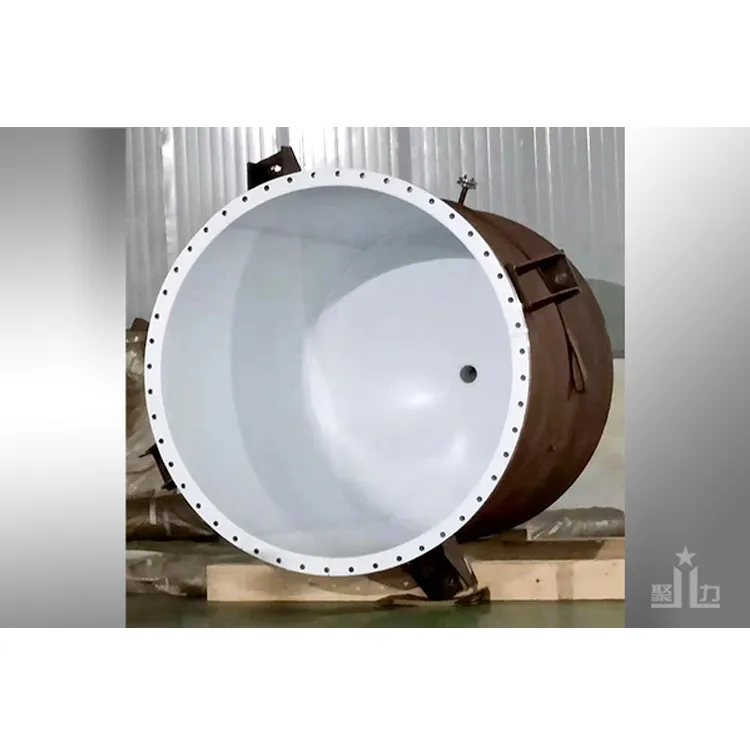
Real-World Application Cases and Client Experience
The practical benefits of PTFE Lined Tank solutions are best illustrated through their successful deployment in challenging industrial settings.
- Case Study 1: Highly Concentrated Acid Storage in a Chemical Plant
A major chemical manufacturer faced recurrent issues with their stainless steel storage tanks for 98% concentrated sulfuric acid and fuming nitric acid. Despite regular maintenance, pitting corrosion and stress corrosion cracking led to frequent leaks and costly shutdowns. After consulting with our engineers, they opted for a 25,000-liter PTFE Lined Tank solution. The tank featured a carbon steel outer shell with a 7mm thick PTFE sheet lining, fusion welded for a seamless barrier. Since installation three years ago, the tank has performed flawlessly, with no signs of corrosion or leakage, significantly reducing maintenance costs and eliminating production interruptions. The client reported a 40% reduction in annual maintenance expenditures related to this specific storage application.
- Case Study 2: High-Purity Pharmaceutical Intermediate Processing
A leading pharmaceutical company required a reactor vessel for synthesizing highly sensitive pharmaceutical intermediates using aggressive solvents and catalysts at elevated temperatures (up to 180°C). Metallic contamination was unacceptable, as it would compromise drug purity. A 5,000-liter PTFE Lined Tank with an internal agitator, also PTFE-lined, was chosen. The design included multiple PTFE-lined nozzles for reactant feed, product discharge, and instrumentation. The non-stick properties of the PTFE liner also facilitated easier cleaning-in-place (CIP) and prevented product buildup, reducing turnaround times between batches. The client praised the tank's inertness and ease of cleaning, which contributed directly to maintaining product quality and operational efficiency in a GMP-compliant environment.
- Case Study 3: Waste Acid Neutralization in a Plating Facility
An industrial plating facility was struggling with the rapid deterioration of their concrete and FRP neutralization tanks, which handled a mixture of chromic acid, hydrochloric acid, and various heavy metal solutions. We provided a series of custom-sized PTFE Lined Tank solutions ranging from 1,000 to 5,000 liters for their neutralization process. The robust PTFE lining withstood the fluctuating pH levels and concentrated chemical attacks. Furthermore, the tank designs incorporated specific features for sludge accumulation and discharge. The facility reported a dramatic increase in tank service life, eliminating the need for expensive relining or replacement every few years, leading to significant long-term savings and improved environmental compliance.
These case studies underscore the practical value and long-term benefits of investing in high-quality PTFE Lined Tank solutions, demonstrating their proven track record in diverse, challenging industrial applications.
Frequently Asked Questions (FAQ) about PTFE Lined Tank
- Q1: What is a PTFE Lined Tank and why is it preferred over other materials?
- A PTFE Lined Tank consists of an outer structural shell (typically carbon steel, stainless steel, or FRP) lined internally with Polytetrafluoroethylene (PTFE). It is preferred due to PTFE's exceptional chemical inertness, wide temperature range, non-stick properties, and high purity, making it superior to unlined metal or rubber-lined tanks for aggressive media.
- Q2: What are the typical operating temperature and pressure ranges for a PTFE Lined Tank?
- PTFE Lined Tank solutions can typically operate from -200°C to +260°C (-328°F to +500°F). The design pressure depends on the outer shell material and thickness, often ranging from full vacuum to several bar (e.g., up to 6 bar for smaller vessels), compliant with ASME standards.
- Q3: How is the PTFE liner bonded to the tank shell?
- Various methods exist. For sheet lining, PTFE sheets are meticulously welded together to form a seamless barrier, and then either mechanically held in place, adhesive-bonded (with chemically resistant adhesives), or securely anchored to the prepared inner surface of the steel shell. Advanced methods like isostatic molding or rotomolding can achieve a full, uniform bond.
- Q4: What is "spark testing" in the context of a PTFE Lined Tank?
- Spark testing (or high-voltage holiday testing) is a critical non-destructive test performed on the PTFE liner. A high-voltage probe is passed over the entire surface. If there are any pinholes, cracks, or imperfections in the liner, an electrical spark will jump through, indicating a fault that needs to be repaired to ensure complete integrity and prevent chemical permeation.
- Q5: Can PTFE Lined Tank solutions handle abrasive materials?
- While PTFE is generally resistant to abrasion, its primary strength lies in chemical resistance. For highly abrasive slurries, specialized reinforced PTFE composites or design considerations (e.g., lower flow velocities, specific agitator designs) might be incorporated. It handles mild to moderate abrasion well in corrosive environments.
- Q6: What is the typical lead time for a custom PTFE Lined Tank?
- The lead time for a custom PTFE Lined Tank varies based on size, complexity, and current manufacturing schedules, but typically ranges from 8 to 16 weeks from design approval to delivery. Expedited options may be available for urgent projects.
- Q7: What maintenance is required for a PTFE Lined Tank?
- Maintenance for a PTFE Lined Tank is generally low due to the durability of PTFE. Regular visual inspections for any signs of liner damage (e.g., cracks, blisters, discoloration) are recommended, especially after severe thermal cycles or mechanical stress. Prompt repair of any identified defects is crucial to maintain long-term performance. Cleaning usually involves flushing with water or mild solutions due to the non-stick surface.
Conclusion: The Unrivaled Value of PTFE Lined Tank Solutions
In an industrial landscape where safety, efficiency, and environmental compliance are paramount, the PTFE Lined Tank stands out as an indispensable asset. Its unique combination of chemical inertness, thermal stability, and robust construction offers a superior solution for handling the most aggressive and high-purity media. From mitigating corrosion risks and extending equipment lifespan to ensuring product purity and reducing operational costs, the long-term value proposition of PTFE Lined Tank technology far outweighs initial investment.
As industries continue to evolve, demanding more specialized and reliable containment solutions, the role of advanced materials like PTFE will only grow. Investing in a high-quality PTFE Lined Tank from a reputable manufacturer ensures not only compliance with stringent industry standards but also contributes significantly to safer operations, reduced environmental impact, and a lower total cost of ownership over the equipment's extended service life. For applications where failure is not an option and maximum reliability is required, the PTFE Lined Tank remains the material of choice.
Further Reading and References:
- Grand View Research. (2023). Chemical Processing Equipment Market Size, Share & Trends Analysis Report, 2023 - 2030. Available at: [https://www.grandviewresearch.com/industry-analysis/chemical-processing-equipment-market](https://www.grandviewresearch.com/industry-analysis/chemical-processing-equipment-market) (Note: Specific report details might require subscription for full access, but market trends are generally cited)
- Brink, E. E., & Darden, C. A. (2009). Fluoropolymer Linings for Chemical Processing Equipment. Corrosion Engineering Handbook, 3rd Edition, Taylor & Francis Group. (Reference to academic publication on fluoropolymer lining principles, available through scientific databases/university libraries)
- ISO 9001:2015. Quality management systems — Requirements. International Organization for Standardization. (Standard for quality management systems, broadly accessible).
- ASME Boiler and Pressure Vessel Code, Section VIII, Division 1. Rules for Construction of Pressure Vessels. American Society of Mechanical Engineers. (Industry standard for pressure vessel design, available through ASME).
- Grumman, S. R., & Dersch, W. C. (2001). Fluoropolymer linings: Design, fabrication, and inspection. NACE International Conference & Expo, Corrosion 2001. (Conference paper discussing the practical aspects of fluoropolymer linings, often found in NACE publications or conference proceedings).
Related Products
Our main products are polyurethane lined pipes, mining equipment fittings and metal hoses.




